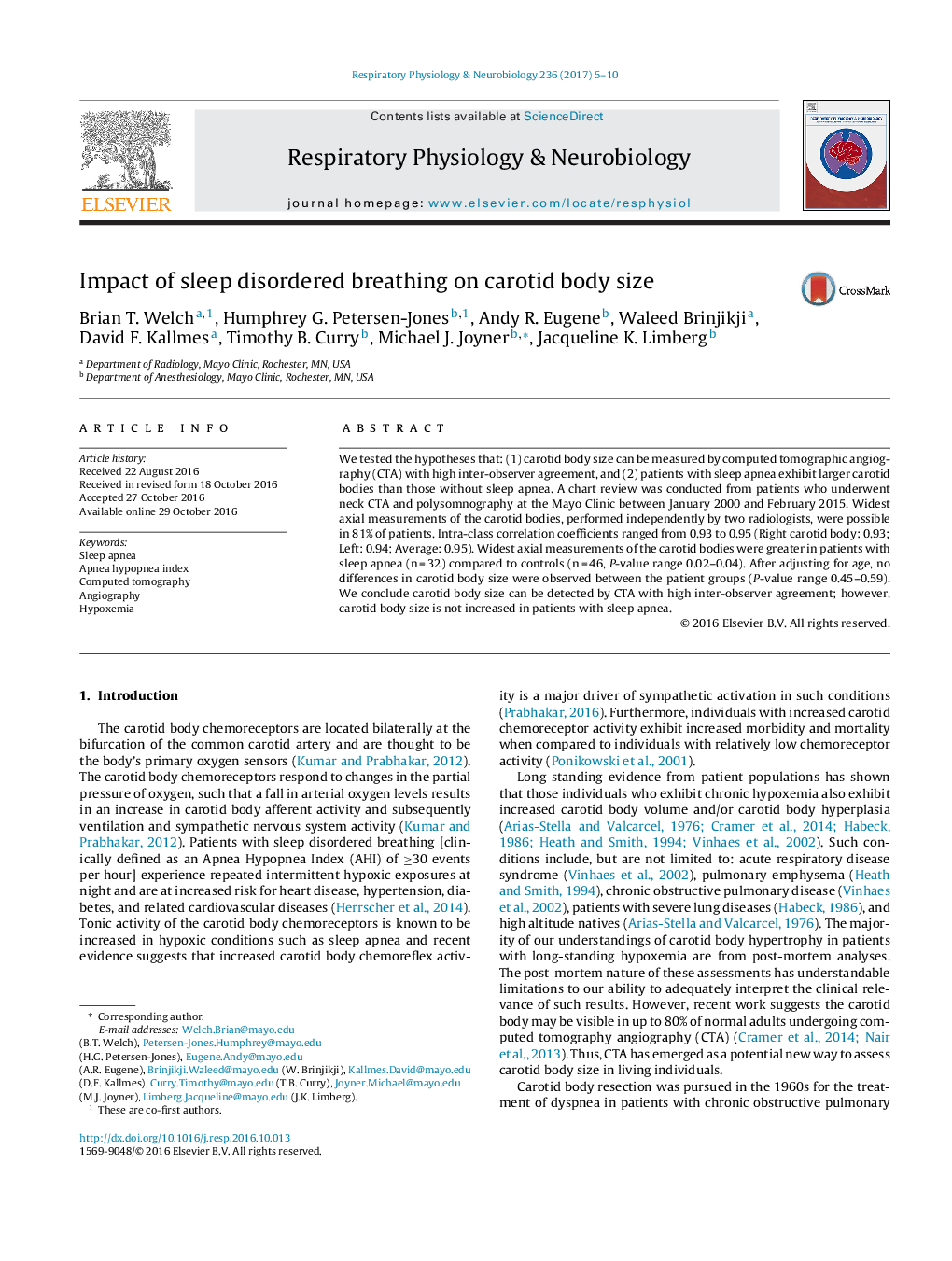| Article ID | Journal | Published Year | Pages | File Type |
|---|---|---|---|---|
| 5594181 | Respiratory Physiology & Neurobiology | 2017 | 6 Pages |
Abstract
We tested the hypotheses that: (1) carotid body size can be measured by computed tomographic angiography (CTA) with high inter-observer agreement, and (2) patients with sleep apnea exhibit larger carotid bodies than those without sleep apnea. A chart review was conducted from patients who underwent neck CTA and polysomnography at the Mayo Clinic between January 2000 and February 2015. Widest axial measurements of the carotid bodies, performed independently by two radiologists, were possible in 81% of patients. Intra-class correlation coefficients ranged from 0.93 to 0.95 (Right carotid body: 0.93; Left: 0.94; Average: 0.95). Widest axial measurements of the carotid bodies were greater in patients with sleep apnea (n = 32) compared to controls (n = 46, P-value range 0.02-0.04). After adjusting for age, no differences in carotid body size were observed between the patient groups (P-value range 0.45-0.59). We conclude carotid body size can be detected by CTA with high inter-observer agreement; however, carotid body size is not increased in patients with sleep apnea.
Related Topics
Life Sciences
Biochemistry, Genetics and Molecular Biology
Physiology
Authors
Brian T. Welch, Humphrey G. Petersen-Jones, Andy R. Eugene, Waleed Brinjikji, David F. Kallmes, Timothy B. Curry, Michael J. Joyner, Jacqueline K. Limberg,
